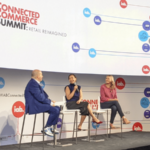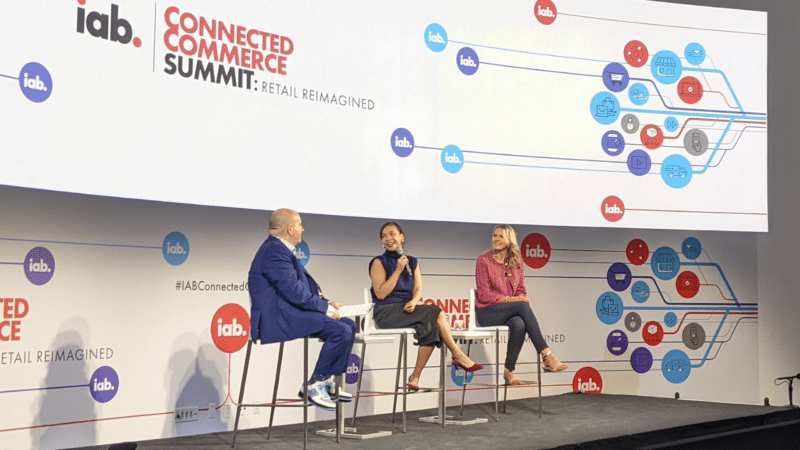“At the moment, I feel like the industry has stalled; there’s not much innovation happening because everyone is waiting to see what Google does.”
That was Amit Kotecha, CMO at digital advertising, audience insights and measurement platform Quantcast, talking to us back in May of this year. It turns out that three months is a lifetime in adtech. Google finally broke the stalemate. It announced that it would not deprecate cookies on the Chrome browser but let individual users decide whether to permit them or not.
It took years of debate between Google, regulators and the ad industry to arrive at the point where cookies will fade with a whimper rather than go out with a bang. And now Amit Kotecha was in town again.
Back in education mode
“Our perspective is still the same,” he said. “Deprecation of cookies is inevitably going to happen; how it happens might be different to the last conversation that we had.”
Was he surprised at the recent turn of events? “Not at all, especially given all the back and forth with regulators. This takes a little bit of attention away from just cookies and puts the onus back on the user.” There are reasons to think that users, given the choice, will abandon cookies in droves.
“When this happened,” said Kotecha, “a lot of our customers said ‘We don’t need to worry any more, let’s move back to cookies.’ I don’t think that’s the right thing to do, so we’re back in education mode again with our customers.”
A further reality check has been Oracle withdrawing third-party data from sale in Europe, taking away another tool that big advertisers, at least, could rely on. “They’re going to shut it down globally and I think that’s going to happen at the end of the month, so we’ve been preparing for that,” Kotecha said.
An opportunity for CDPs?
Many advertisers are leaning more heavily on first- and zero-party data. Does that mean that there are opportunities here for the fast-changing CDP space? “As a marketer, I’ve used CDPs before,” Kotecha said. “They’re point solutions; what I mean by that is they solve a specific problem that could be solved elsewhere. They’re expensive, they take time to implement, and once they’re implemented you need a person looking after them.”
CDPs might make sense for larger companies, but in the case of Quantcast they do the work themselves, querying data in the data lake using Snowflake. “It’s more manual, but we have engineers that can do that work for us.” However, many Quantcast customers do have CDPs and want to activate their data in Quantcast. “We integrate with quite a few CDPs in the ecosystem.”
Dig deeper: Google’s Privacy Sandbox: What you need to know
The cookieless metrics challenge
Marketers are clearly concerned about the ways in which third-party cookie deprecation will affect their ability to reach potential customers. What has been discussed less is what measurement will look like in a post-cookie world.
“Measurement is the elephant in the room for the whole industry,” Kotecha agreed. “Google’s announcement was a relief for a lot of companies because they can still measure, even if it’s only a portion of their campaigns, they can still say it’s working. Our view has always been different.”
Quantcast’s approach is to look at conversions and build models based on what kinds of customers convert. “Because we know something about your customers already, we can go out and find new customers for you,” Kotecha explained.
Quantcast now has a measurement solution built into its platform. “If there’s a cookie, we’ll use the cookie,” Kotecha said. If there’s no cookie, the solution will predict whether a conversion was based on an impression Quantcast delivered. “For every conversion, we’re measuring a probability score — the higher the probability, the better our targeting will become. If we’re not confident about a conversion, we’ll disregard it.”
Google, Kotecha observed, now has a similar solution, Enhanced Conversions, in its ad platform. “It will model conversions based on all the data Google has and it will tell you a Quantcast campaign delivered this many conversions. That has given us a lot of confidence that we can go out and find audiences in Safari and elsewhere because we’re constantly seeing data; for two years we’ve been enhancing this solution.”
It’s not the end of the open web
Despite the doomsday view that the end of cookies will drive all ad spend to the walled gardens, Kotecha still believes in alternatives. “One of the reasons I am still in this industry is, I believe in the open web,” he said. “I believe in news and that is all funded by advertising. If all the advertising dollars go to the walled gardens, then every publication will be sold to the walled gardens or won’t be around any more. That can’t happen.”
To put this in perspective, Kotecha said, more than 50% of conversions globally are modeled because there is no cookie attached. “It’s already happening,” he said.
Related stories
New on MarTech
@media screen and (min-width: 800px) { #div-gpt-ad-6013980-7 { display: flex !important; justify-content: center !important; align-items: center !important; min-width:770px; min-height:260px; }
}
@media screen and (min-width: 1279px) { #div-gpt-ad-6013980-7 { display: flex !important; justify-content: center !important; align-items: center !important; min-width:800px!important; min-height:440px!important; }
}
.avatar-border { border: 3px solid #ee3024; } .badge-color { border: 1px solid #ee3024 !important; background-color: #ee3024 !important; }








